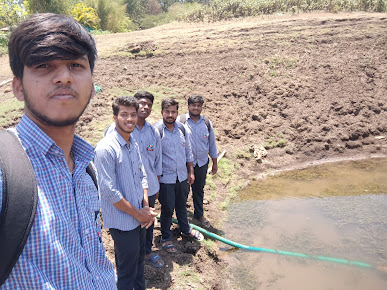WATER CONSERVATION
INTRODUCTION
As the world faces an increasingly critical need to address climate change, the impact that water conservation has on a sustainable environment is undeniable. Groundwater is the primary source of freshwater that caters to the demand of ever-growing domestic, agrarian and industrial sectors of the country. Over the years, it has been observed that the necessity for the exploitation of groundwater resources for various everyday needs, like toileting, bathing, cleaning, agriculture, drinking water, industrial and ever-changing lifestyles with modernization is leading towards tremendous water wastage.
Though
many technological devices are being developed to minimize the water wastage,
the impact will be greater if every individual contributes to water
conservation by minimizing or optimizing groundwater usage for daily
activities. Today, water conservation at individual level has become very
critical.
Our
water resources are depleting each year. Additionally, we cannot generate
artificial water and must depend on water sources available on our planet
earth. Due to population boom and excessive need of water to suit our
ever-expanding modern lifestyle, water scarcity is felt all over the world.
This has given rise to major concerns over water conservation.
In
this context, adopting rainwater harvesting and recharging groundwater is one
of the simplest and best measures in conserving water globally. This practice
can efficiently be implemented in lieu of traditional water supplies that are
currently on the verge of tapping out.
RAINWATER HARVESTING
Rainwater
harvesting is a simple strategy by which rainfall is gathered and stored for
future usage. The process involves collection and storage of rainwater with
help of artificially designed systems, that runs off natural or man-made
catchment areas e.g. rooftop, compounds, rocky surface, hill slopes or
artificially repaired impervious/semi-pervious land surface. The collected
rainwater from surfaces on which rain falls may be filtered, stored and
utilized in different ways or directly used for recharge purposes. Rainwater
Harvesting is unrestricted from any kind of impurity, with relatively less
storage cost and no maintenance cost involved except for periodical cleaning.
With
depleting groundwater levels and fluctuating climate conditions, this measure
can go a long way to help mitigate the adverse effects rising water scarcity.
Reserving rainwater can help recharge local aquifers, reduce urban flooding and
most notably, ensure water availability in water-scarce zones.
Advantages of
implementing rain-water harvesting:
Ø Reduced Water Bills
Rainwater
harvesting systems are cost-effective, provide high-quality water, lessens
dependence on wells and are considerably easy to maintain since they are not
utilized for drinking, cooking or other sensitive uses. The all-around
expenditures used in setting up harvesting methods are much cheaper compared to
other purifying or pumping means. The cost of recharge to the subsurface
reservoir is also lower than the surface reservoirs.
Ø Ecological benefit
Storing
water underground is environment-friendly. The ecological benefits of rainwater
harvesting are immense. It minimizes the impacts of flooding by funneling the
off water into large tanks for recycling and helps reduce the load placed upon
drainage systems. No land is wasted for storage purpose and no population
displacement is implicated therefore, groundwater is not directly exposed to
evaporation and pollution. Additionally, it helps minimize the possibility of
rivers drying up.
Ø Reduces erosion and flooding around
buildings
It
reduces soil erosion and flood hazards by collecting rainwater and reducing the
flow of stormwater to prevent urban flooding. Most buildings that utilize
rainwater harvesting systems have a built-in catchment area on top of the roof,
which has a capacity of collecting large volumes of water in case of
rainstorms.
Ø An adequate means for Irrigation
purpose
Harvesting
rainwater allows the collection of large amounts of water and mitigates the
effects of drought. Most rooftops provide the necessary platform for collecting
water. Rainwater is mostly free from harmful chemicals, which makes it suitable
for irrigation purposes.
Ø Reduces demand on Ground Water
Another
vital benefit is that it increases the productivity of aquifer resulting in the
rise of groundwater levels and reduces the need for potable water. It is
extremely essential, particularly in areas with low water levels.
There are two
major techniques of rainwater harvesting.
1. Surface runoff harvesting
In
this method, rainwater flows away as surface runoff and can be stored for
future use. Surface water can be stored by diverting the flow of small creeks
and streams into reservoirs on the surface or underground. It can provide water
for farming, for cattle and also for general domestic use. Surface runoff
harvesting is most suitable in urban areas.
Rooftop
rainwater/storm runoff can be harvested in urban areas through:
• Recharge Pit
•
Recharge Trench
•
Tubewell
•
Recharge Well



Comments
Post a Comment